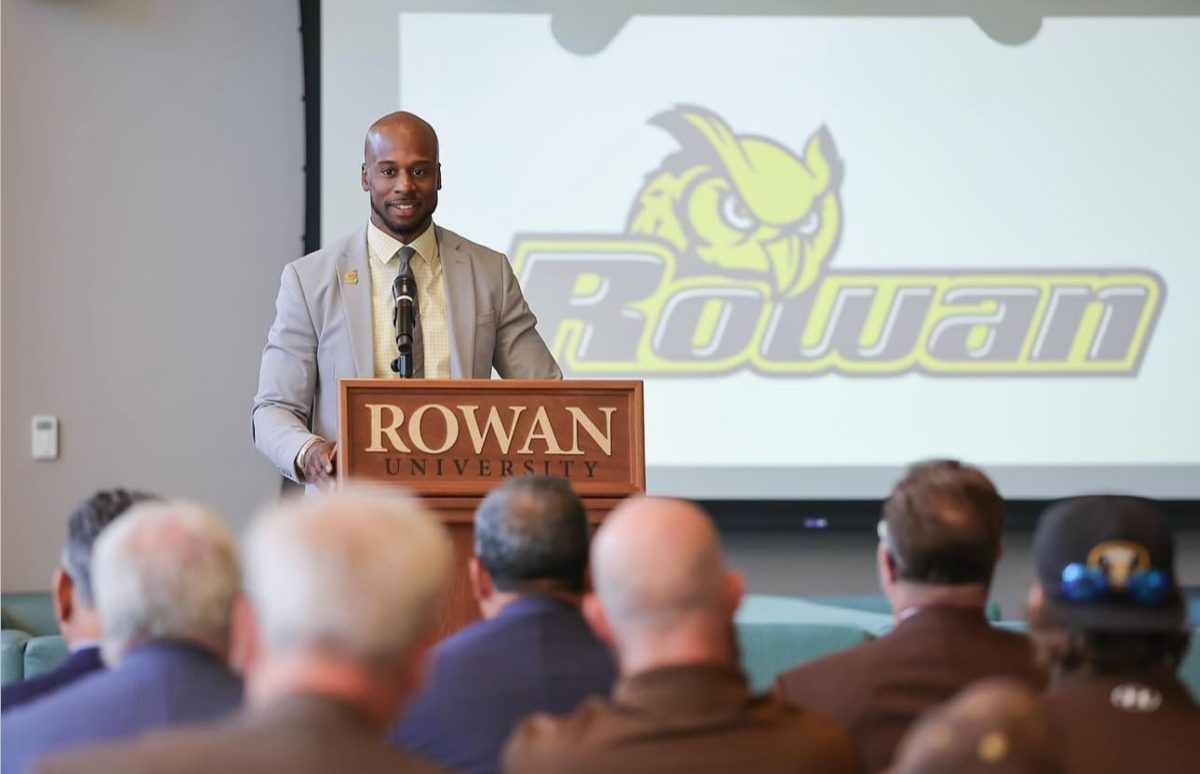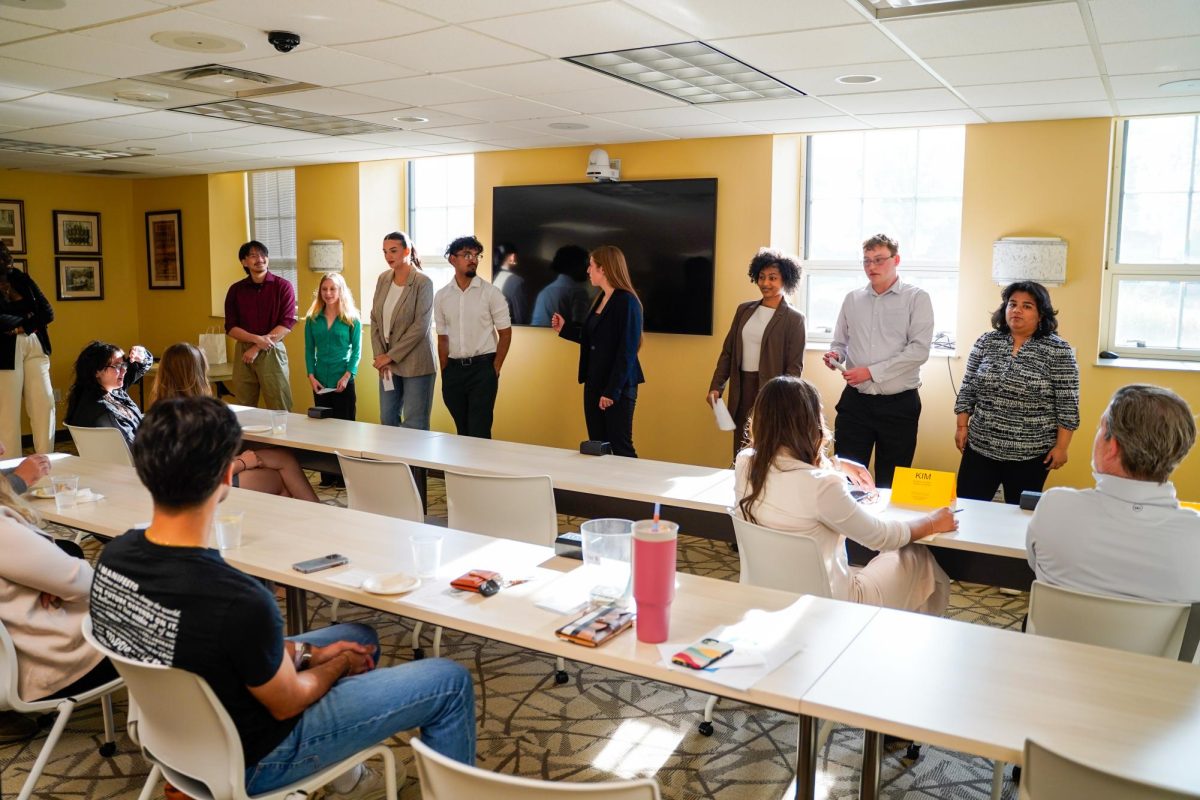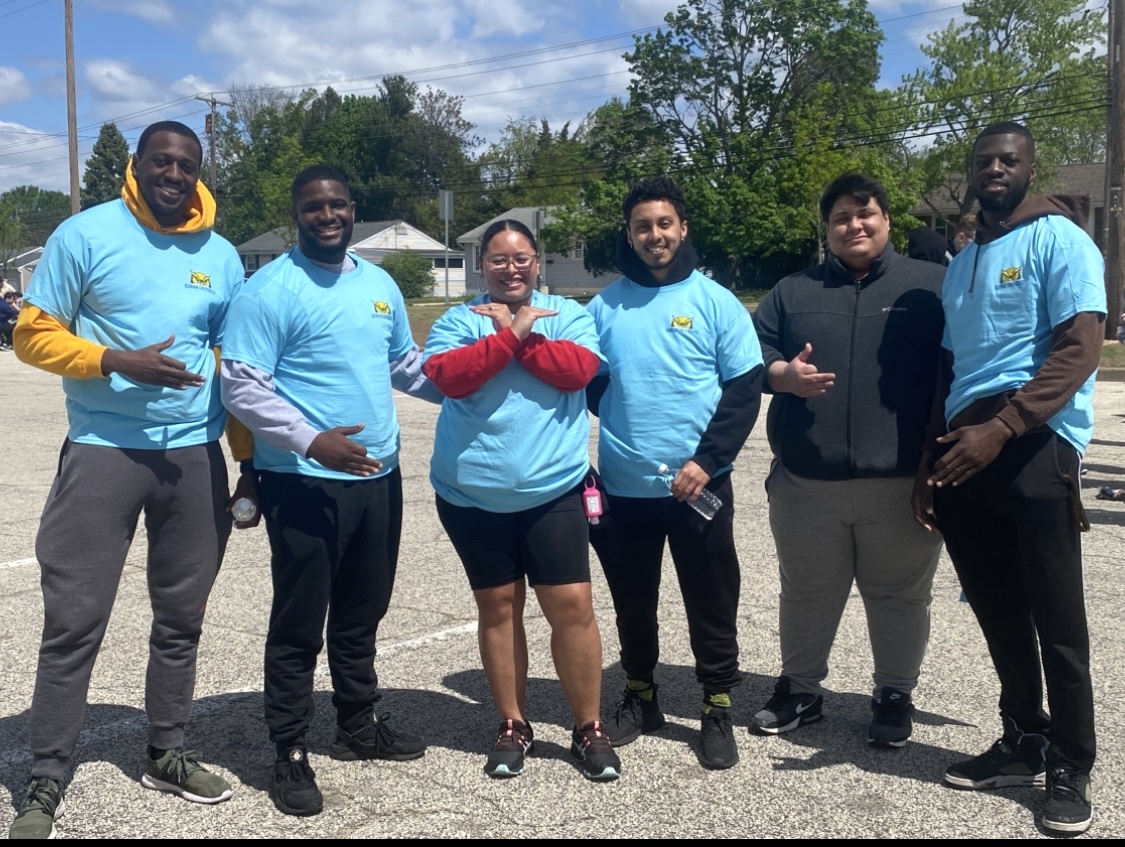With the openings of both Business Hall and the Rowan Hall extension this semester, Rowan University has made it clear that traditional classroom settings are becoming a thing of past. Through use of the latest devices to integrate everyday technology into the classroom, the university has begun to shift the instruction method from the common lecture to interactive discussion between student and professor.
One major move in this shift is the use of tablets in the classroom. With the ability to broadcast the display of a tablet onto a projection screen, instructors can now move freely around the classroom and even put the lesson into the hands of students.
“If I want to, I can give this tablet to a student and give them the floor and have them be involved as a part of that discussion,” said Dr. Neil Toporski, director of technology services at Rowan. “I can share the lecture with my students … and it becomes more immersive for those students … That’s where we want to go.”
Toporksi summarized how the university aims to make lectures more of a “two-way collaborative effort” as opposed to the traditional one-way communication of the instructor giving a lesson.
This philosophy isn’t limited to just the Glassboro campus, either.
Dr. Patrick Chadd, director of technology services at the Rowan School of Osteopathic Medicine in Stratford, New Jersey, gave a keynote presentation in late January emphasizing the need to embrace the use of technology. According to Chadd, not only would the use of advanced technology aid in real-world application of their education, it can also help with the short attention spans of students.
The new classrooms in Rowan Hall, for example, have been dubbed as “BYOD” (Bring Your Own Device) in order to get students to learn how to use what they already have as opposed to using what’s given to them in the classroom. The reason for this, as explained by Toporski, is that engineers in the real world use their own devices out in the field. Because professionals don’t sit in a lab with publicly-accessible devices, giving the students that kind of advantage, then, would not serve them well for the future.
Similar to Business Hall, the Engineering Hall offers collaboration rooms that provide students with an environment that serves as a catalyst for teamwork. Equipped with whiteboards and high-definition televisions that can be used to broadcast information, the rooms offer a multitude of ways for students to efficiently work together.
“The way the whiteboards and TVs are positioned allows you to look at both while you’re working and that really helps out for the types of problems engineers are given,” said junior civil engineering major Chris Young.
He added that prior to the introduction of the collaboration rooms, the conference rooms in the Campbell Library were best suited for engineers to work together. Unfortunately, the limited number of these conference rooms made signing them out fairly difficult. Now, the engineers have more than enough rooms to work in their own building—so much so that, according to Young, students are very unlikely to not find a vacant one.
“When I first arrived at Rowan, we had something like 13 tech classrooms. With the College of Business and College of Engineering, we now have close to 206,” Toporski said.
“We’re heads and tails ahead of [other universities],” Toporski said.
In the future, however, smartphones may be the only thing needed in the classroom.
“It’s our understanding that in the future … with all the virtual technologies that are out there, why would I need a computer? This could be my computer,” Toporski said.
For comments/questions about this story, email [email protected] or tweet @TheWhitOnline.





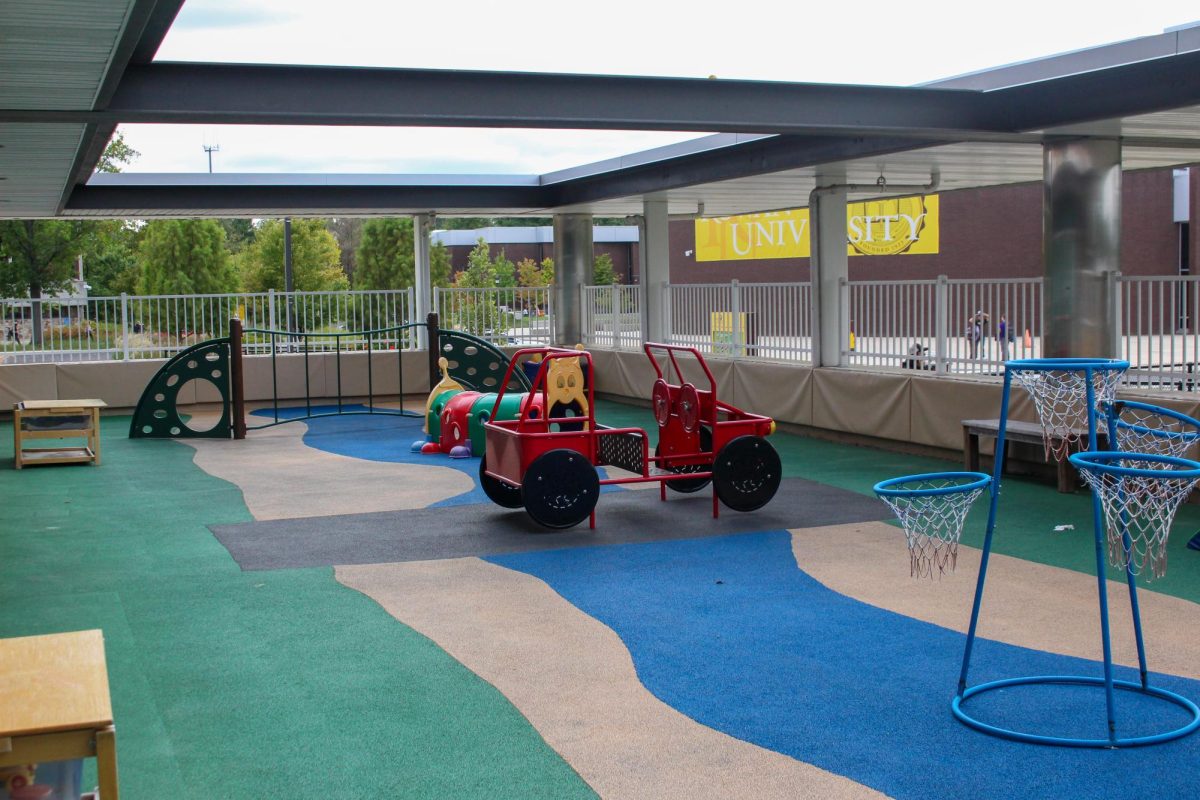

















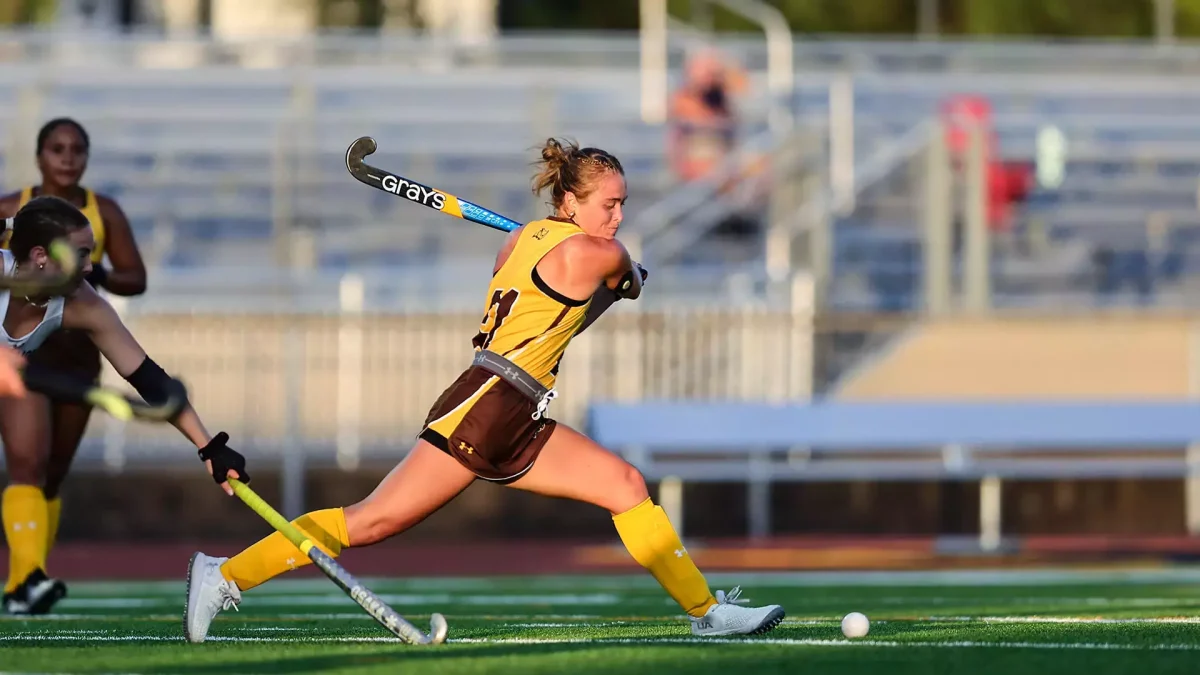








































































































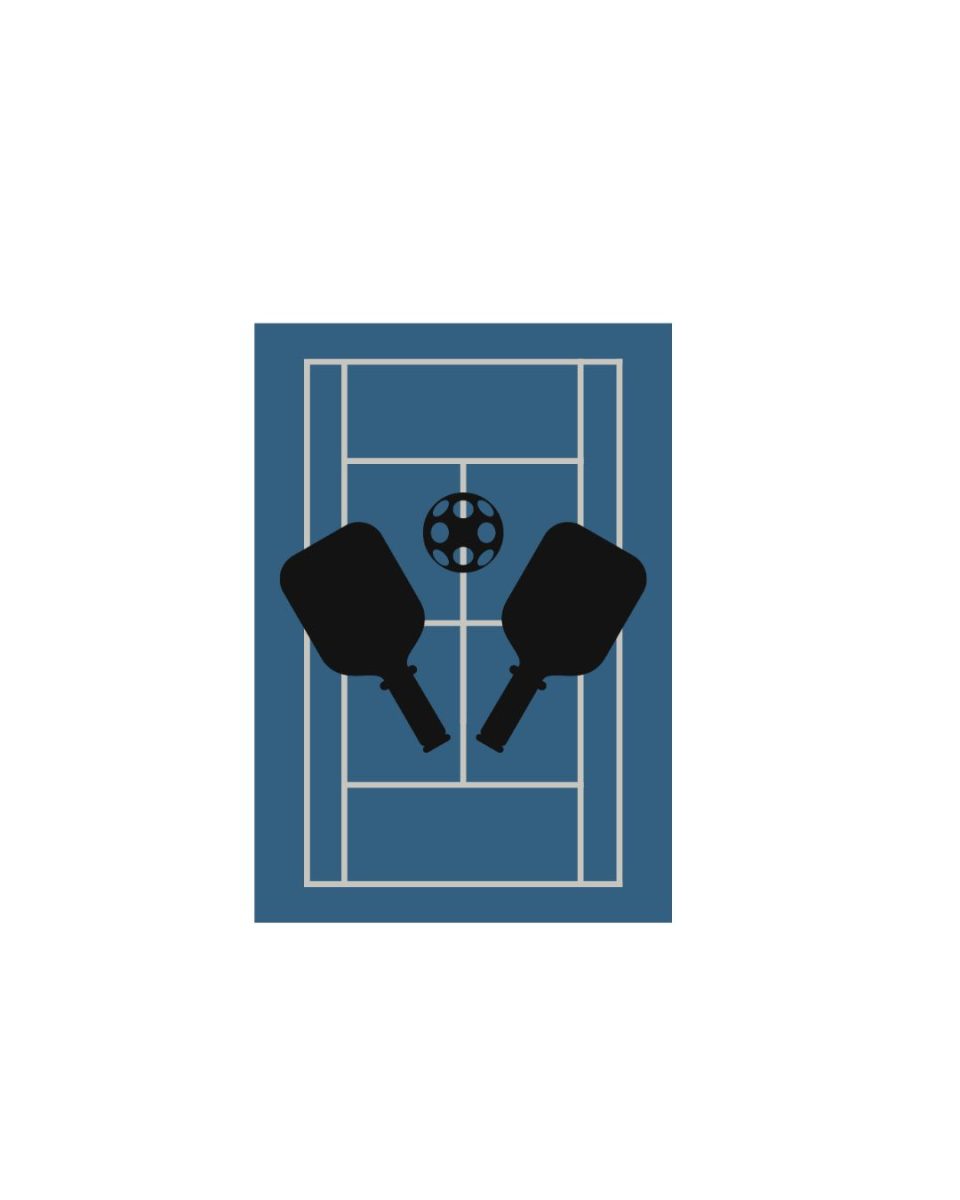
























!["Working with [Dr. Lynch] is always a learning experience for me. She is a treasure,” said Thomas. - Staff Writer / Kacie Scibilia](https://thewhitonline.com/wp-content/uploads/2025/04/choir-1-1200x694.jpg)








































